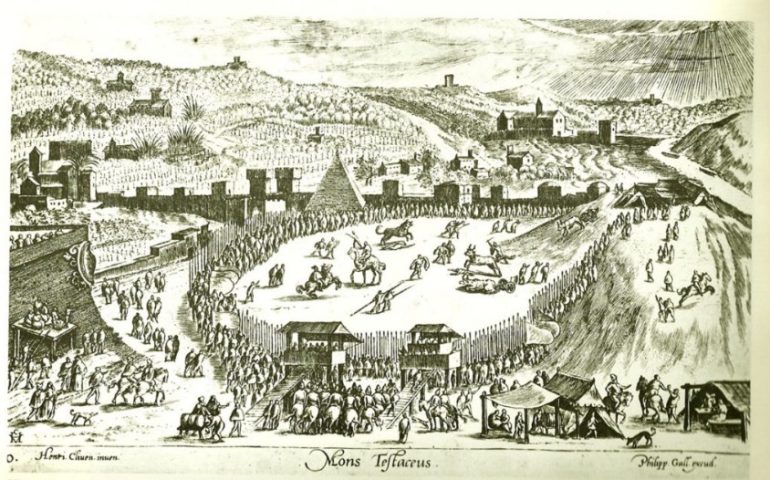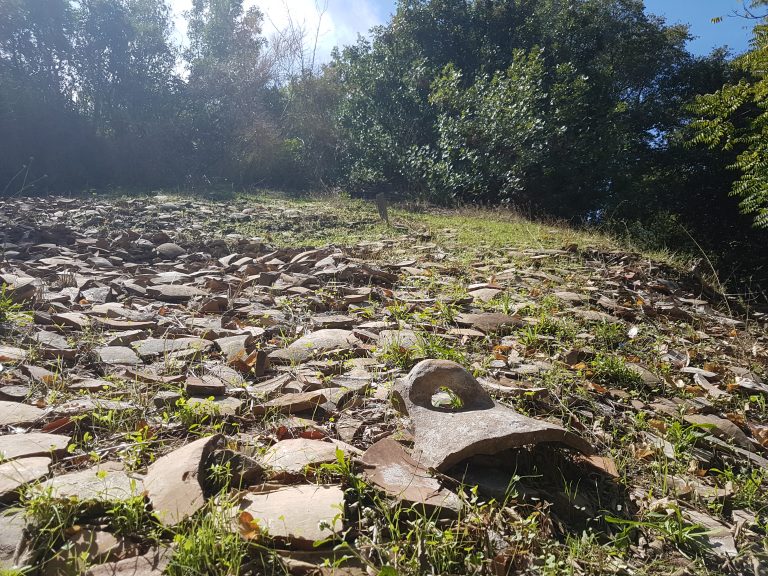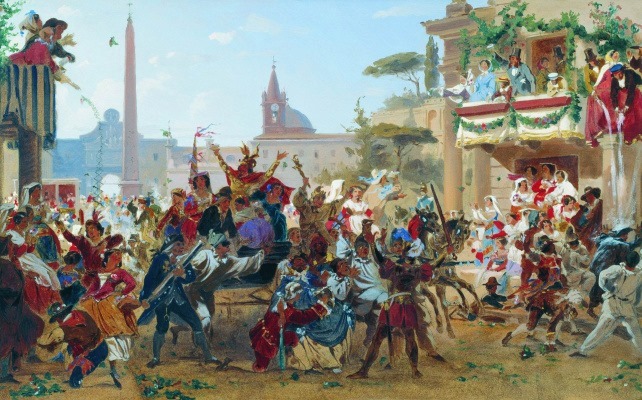The Testaccio Carnival has medieval origin
The memory of the Testaccio carnival is linked to the Ludus Testaccie: it was a celebration of the carnival genre, the first traces of which date back to 1256, when he was Pope Alexander IV. The games lasted until 1466 and were particularly cruel: the party participants enjoyed throwing the animals from the mountain; pigs, wild boars and bulls were sacrificed which the lusores then pierced, to kill and eat them. It was a closely contested race to be the first to get hold of the beasts’ flesh.

The Testaccio district develops around Monte dei Cocci, an artificial hill born from the accumulation of discarded Roman amphorae. The hill has a perimeter of about one kilometer and is about 50 meters high.
The area was then used as a real landfill for the disposal of the amphorae.

As Historia Regni reports, the carnival opened on Monday with a race of young people, on Tuesday the Jews ran, on Wednesday the old ones. The runners were always all naked, when there was rain, cold or mud, and this resulted in a real mockery for the participants. In addition to the obligation of the race, the Jews also had to pay a tax of one thousand one hundred and thirty-one florins for the expenses of the celebrations.
Thursday followed the race of the barbers, horses coming from the North African side. On Saturdays, each of the thirteen gonfalonieri – or caporioni – of the thirteen districts of Rome, led a bull adorned with flowers into his neighborhood, accompanied by certain ministers in begging to collect salted meats, donuts, cheeses and flasks of wine which the next day they brought at a banquet in Piazza Navona together with the bulls. The following Sunday the most noble citizens gathered in the Campidoglio, adorned with rich and precious clothes, and in procession they reached via di Testaccio.

Thus took place a sumptuous procession of carts of all magistrates, corporations, nobility. The Trastevere district opened the procession. Each district had its triumphal chariot with its insignia drawn by four white horses, and followed by ten young horsemen each accompanied by six grooms, richly dressed in livery uniforms.
ITALY TOURS AVAILABLE HERE
The knights were followed by the standard-bearers with ten grooms each, preceded by the drums. He was followed by the master executioners, the reformers of the study, the two judges of the senator, the captain of the appellation, the putto of justice, the two chancellors of the people, the conservatives and the senator, who accompanied three hundred soldiers on foot with their captain to horse. Finally, a crowd of Roman gentlemen and foreigners, all on horseback, closed the pump.
When this triumphal pomp arrived in the Testaccio meadow, thirteen carts pulled by bulls were placed on the mountain and bullocks and pigs were tied to each of them. On each chariot a pole was erected from which a rod of pink cloth hung.
SINCE 2009 ON:

So prepared, these carts were pushed down from Testaccio and following them the knights of the previous procession, all young men of the Roman nobility, launched themselves. They, unsheathed their swords, attacked the carts and fought among themselves to take possession of pigs, cattle and cloth. A real battle ensued in which there were no casualties.
